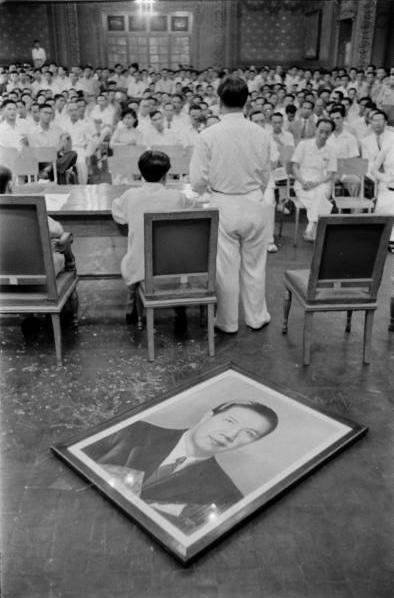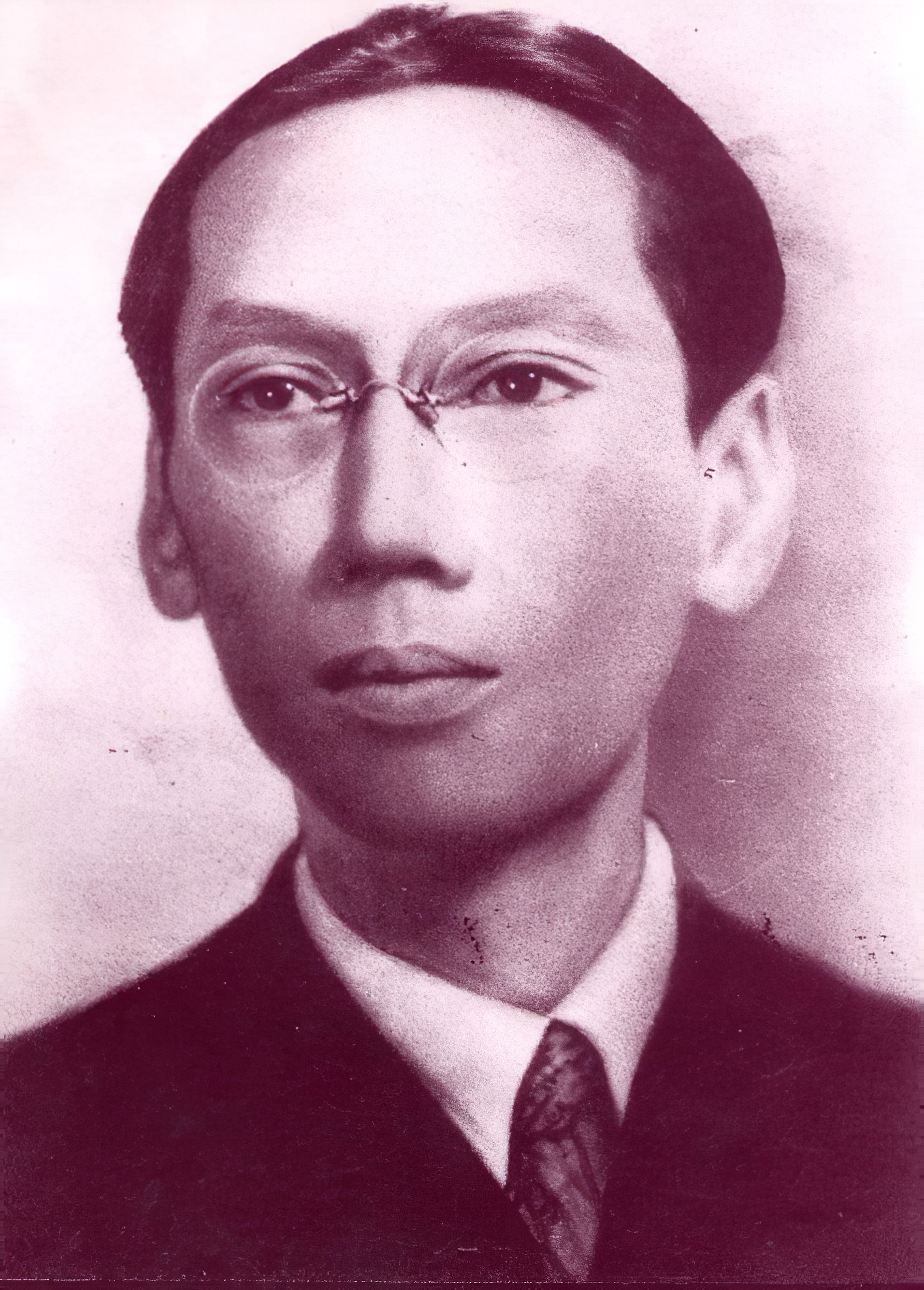|
Nội Các (Nguyễn Dynasty)
The Grand Secretariat, or the Cabinet (Vietnamese: ''Nội các'', 內閣) of the Nguyễn dynasty, was the highest branch of its government until the 1930s. Its functions were to serve at the pleasure of the emperor. The Grand Secretariat consisted of four senior officials and 28 employees who served as secretaries, readers, and recorders and worked for almost the imperial government's documents and affairs. The senior officials were ''Thượng bảo tào,'' ''Biểu bạ tào,'' ''Bí thư tào'' and ''Ký chú tào.'' During the reign of the emperor Gia Long (1802–1819), the cabinet comprised 3 secretaries: ''Thị Thư Viện'', ''Thị Hàn viện'' and ''Nội Hàn Viện.'' In 1820, emperor Minh Mạng dissolved the three secretaries, incorporated them into the new organ called ''Văn thư phòng''–the predecessor of the ''Nội các''. However, the ''Văn thư phòng'' did not function as a legislature branch of the imperial court until 1829, when Minh Mạng r ... [...More Info...] [...Related Items...] OR: [Wikipedia] [Google] [Baidu] |
Seals Of The Nguyễn Dynasty
The seals of the Nguyễn dynasty can refer to a collection of seals (印篆, ''Ấn triện'' or 印章, ''Ấn chương'') specifically made for the emperors of the Nguyễn dynasty (chữ Hán: 寶璽朝阮 / 寶璽茹阮), who reigned over Vietnam between the years 1802 and 1945 (under French protectorates since 1883, as Annam and Tonkin), or to seals produced during this period in Vietnamese history in general (the latter are generally referred to in Vietnamese as 印信, ''ấn tín''). [...More Info...] [...Related Items...] OR: [Wikipedia] [Google] [Baidu] |
Hàm Nghi
Emperor Hàm Nghi (, vi-hantu, lit. "entirely right", 3 August 1871 – 14 January 1944), personal name Nguyễn Phúc Ưng Lịch (), also Nguyễn Phúc Minh, was the eighth emperor of the Vietnamese Nguyễn dynasty. He reigned for only one year (1884–85). He was the younger brother of Emperor Kiến Phúc. In 1884, Hàm Nghi was enthroned at the age of 13 by the regents Nguyễn Văn Tường and Tôn Thất Thuyết. After the failed counterattack at the imperial capital Huế in 1885, Tôn Thất Thuyết took him out of the capital where he issued the Cần Vương edict to resist French colonial rule. In Hàm Nghi’s name, Tôn Thất Thuyết launched the Cần Vương movement, calling upon scholars and patriots to assist the Emperor by rising up to fight and save the nation, to regain independence. This movement lasted until 1888, when Hàm Nghi was captured. Afterward, he was exiled to Algiers the capital of Algeria, where he later died in 1944 from stomach ... [...More Info...] [...Related Items...] OR: [Wikipedia] [Google] [Baidu] |
Bảo Đại
Bảo Đại (, vi-hantu, , , 22 October 191331 July 1997), born Nguyễn Phúc (Phước) Vĩnh Thụy (), was the 13th and final emperor of the Nguyễn dynasty, the last ruling dynasty of Vietnam. From 1926 to 1945, he was ''de jure'' emperor of Annam and Tonkin, which were then protectorates in French Indochina, covering the present-day central and northern Vietnam. Bảo Đại ascended the throne in 1932. The Japanese ousted the Vichy French administration in March 1945 and ruled through Bảo Đại, who proclaimed the Empire of Vietnam. Following the surrender of Japan and the subsequent August Revolution, he abdicated in August 1945 in favor of Hồ Chí Minh-led Democratic Republic of Vietnam and briefly served as an advisor in its government. Between 1946 and 1949, Bảo Đại left Vietnam to travel across China, Hong Kong and Europe. During this time, he switched his support from Hồ's Việt Minh to other anti-communist nationalist groups before signin ... [...More Info...] [...Related Items...] OR: [Wikipedia] [Google] [Baidu] |
Chinese Calligraphy
Chinese calligraphy is the writing of Chinese characters as an art form, combining purely Visual arts, visual art and interpretation of the literary meaning. This type of expression has been widely practiced in China and has been generally held in high esteem across East Asia. Calligraphy is considered one of the four most-sought skills and hobbies of ancient Chinese literati, along with playing stringed musical instruments, the Go (game), board game "Go", and painting. There are some general standardizations of the various Chinese script styles, styles of calligraphy in this tradition. Chinese calligraphy and Ink wash painting, ink and wash painting are closely related: they are accomplished using similar tools and techniques, and have a long history of shared artistry. Distinguishing features of Chinese painting and calligraphy include an emphasis on motion charged with dynamic life. According to Stanley-Baker, "Calligraphy is sheer life experienced through energy in motion tha ... [...More Info...] [...Related Items...] OR: [Wikipedia] [Google] [Baidu] |
Khải Định
Khải Định (; chữ Hán: 啓定; born Nguyễn Phúc Bửu Đảo; 8 October 1885 – 6 November 1925) was the 12th emperor of the Nguyễn dynasty in Vietnam, reigning from 1916 to 1925. His name at birth was Prince Nguyễn Phúc Bửu Đảo. He was the son of Emperor Đồng Khánh, but he did not succeed him immediately. Biography Before Emperor Đồng Khánh's era came the eras of Emperor Thành Thái and Emperor Duy Tân, both of whom were exiled by the French for their resistance to the colonial regime. After this trouble, the French decided to enthrone Bửu Đảo as he was the son of the monarch who was the most submissive Nguyễn collaborator with the protectorate, standing with the French colonizers and opposing any independence movements, Emperor Đồng Khánh. Nguyễn Phúc Bửu Đảo became the nominal ruler of Annam on 18 May 1916, after the exile of Duy Tân (Nguyễn Phúc Vĩnh San) and took the name Khải Định for his reign, meaning "auge ... [...More Info...] [...Related Items...] OR: [Wikipedia] [Google] [Baidu] |
Duy Tân
Emperor Duy Tân (, vi-hantu, 維新, lit. "renovation"; 19 September 1900 – 26 December 1945), born Nguyễn Phúc Vĩnh San, was the 11th emperor of the Nguyễn dynasty in Vietnam, who reigned for nine years between 1907 and 1916. Early childhood Duy Tân (at the time, known by his birth name, Prince Nguyễn Phúc Vĩnh San) was son of the Thành Thái emperor. Because of his opposition to French rule and his erratic, depraved actions (which some speculate were feigned to shield his opposition from the French) Thành Thái was declared insane and exiled to Vũng Tàu in 1907. The French decided to pass the throne to his son Nguyễn Phúc Vĩnh San, despite the fact that he was only seven years old. The French hoped that someone so young would be easily influenced and controlled, and thus raised to be pro-French. File:Young prince.jpg, Young prince Vinh San (right). Reign, 1906–1916 The efforts on the part of the French to raise the prince to support them largely fai ... [...More Info...] [...Related Items...] OR: [Wikipedia] [Google] [Baidu] |
Thành Thái
Thành Thái (, vi-hantu, 成 泰; 14 March 1879 – 20 March 1954) born Nguyễn Phúc Bửu Lân (阮福寶嶙), was the son of Vietnamese Emperor Dục Đức and Empress Dowager Từ Minh. He reigned as emperor for 18 years, from 1889 to 1907. Thành Thái was one of the three "patriotic emperors" in Vietnamese history, along with Hàm Nghi and Duy Tân (his son), for their actions and views against French colonial rule in Vietnam. Biography Early life While the emperor Tự Đức was alive, Prince Quang Thái was placed under house arrest with his family for having connections with those who opposed him. When the emperor Đồng Khánh died, however, the French colonial authorities and the high-ranking mandarins decided that Quang Thái was the ideal successor and enthroned him as the new Vietnamese emperor, Emperor Thành Thái. File:Young emperor Thanh Thai.jpg, Young emperor Thanh Thai in 1892 File:Annam3h.jpg, Coronation of Thành Thái. File:Young emperor T ... [...More Info...] [...Related Items...] OR: [Wikipedia] [Google] [Baidu] |
Chinese Guardian Lion
Chinese guardian lions, or imperial guardian lions, are a traditional Chinese architectural ornament. Typically made of stone, they are also known as stone lions or shishi (). They are known in colloquial English as lion dogs, foo dogs, or fu dogs. The concept, which originated and became popular in Chinese Buddhism, features a pair of Asiatic lions — often one male with a ball that represents the material elements and one female with a cub that represents the element of spirit — that were thought to protect the building from harmful spiritual influences and harmful people that might be a threat. Used in imperial Chinese palaces and tombs, the lions subsequently spread to other parts of Asia including Japan (see komainu), Korea, Mongolia, the Philippines, Tibet, Thailand, Myanmar, Vietnam, Sri Lanka, India, Nepal, Cambodia, Laos, Singapore, and Malaysia. Description Statues of guardian lions have traditionally stood in front of Chinese Imperial palaces, Imp ... [...More Info...] [...Related Items...] OR: [Wikipedia] [Google] [Baidu] |
Seal Knob
Seal knob ( 印 纽), refers to carving or small decorative reliefwork at the top or side of a seal. The associated carving technique is called knob carving ( 纽 刻), a traditional technique that originated in ancient China and later spread to other East Asian countries, including Japan and Korea. Nomenclature In ancient China during the Zhou, Qin, and Han dynasties, the head or top-side of a seal was named ''niu'' (). After the Qin and Han dynasties, it was also known as ''yin niu'' (), and ''yin'' (印) here stands for ''seal''. In this sense a seal knob could also be called a seal head (''yin shou'' 印首). Notably, the character for ''knob'' (''niǔ'') is sometimes written as 钮 in simplified Chinese (with 钅), and 鈕 in traditional Chinese (with 金), instead of using the nowadays more commonly used 纽 (with 纟) or 紐 (with 糹) respectively, mainly because in the very early periods governmental seals were mainly made of metal. In addition, a ''seal ... [...More Info...] [...Related Items...] OR: [Wikipedia] [Google] [Baidu] |
Naming Taboo
A naming taboo is a cultural taboo against speaking or writing the given names of exalted persons, notably in China and within the Chinese cultural sphere. It was enforced by several laws throughout Imperial China, but its cultural and possibly religious origins predate the Qin dynasty. Not respecting the appropriate naming taboos was considered a sign of lacking education and respect, and brought shame both to the offender and the offended person. Types * The ''naming taboo of the state'' ( ''guóhuì'') discouraged the use of the emperor's given name and those of his ancestors. For example, during the Qin dynasty, Qin Shi Huang's given name Zhèng (< B-S: *''teŋ-s'') was avoided, and the first month of the year, the ''upright month'' (; ''Zhèngyuè'') had its pronunciation modified to ''Zhēngyuè'' (OC ... [...More Info...] [...Related Items...] OR: [Wikipedia] [Google] [Baidu] |
Ministry Of Rites
The Ministry or Board of Rites was one of the Six Ministries of government in late imperial China. It was part of the imperial Chinese government from the Tang (7th century) until the 1911 Xinhai Revolution. Along with religious rituals and court ceremonial the Ministry of Rites also oversaw the imperial examination and China's foreign relations. A Ministry of Rites also existed in imperial Vietnam. One of its tasks was enforcing the naming taboo. History Under the Han, similar functions were performed by the Ministry of Ceremonies. In early medieval China, its functions were performed by other officials including the Grand Herald. Under the Song (10th-13th centuries), its functions were temporarily transferred to the Zhongshu Sheng. Its administration of China's foreign relations was ended by the establishment of the Zongli Yamen in 1861. Functions *Management of imperial court ceremonies and ritual offerings. *Registration and supervision of Buddhist and Taoist pr ... [...More Info...] [...Related Items...] OR: [Wikipedia] [Google] [Baidu] |








